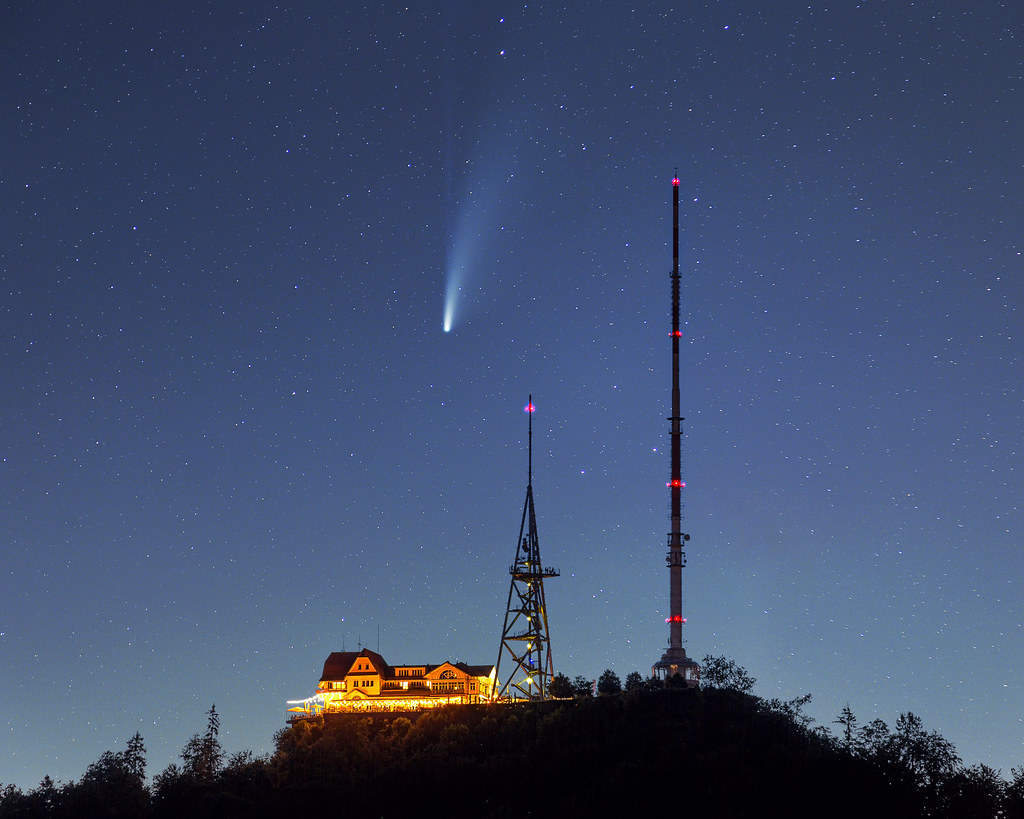Scientists predict that a newly discovered comet will rapidly increase in brightness as it approaches the Sun.
A new comet, C/2023 P1 (Nishimura), discovered on 11 August, has set the astronomical community abuzz with excitement. This remarkable celestial object promises a dramatic brightening as it hurtles towards the Sun, but its behavior remains unpredictable on its first and only visit to the Sun’s harsh environs. With the potential for disintegration and fizzling out, astronomers and enthusiasts are eagerly observing this comet, hoping for a spectacular display.
Comet C/2023 P1 (Nishimura) is currently located in the pre-dawn sky, tracking north-eastwards among the stars of Gemini. Initial reports indicate that it is shining at around magnitude +9.5, with a coma of 5 arcminutes in angular size and a tail eight arcminutes long. As the comet moves closer to Earth, it will reach its closest point, approximately 127.1 million kilometers (0.85 AU), on 13 September, followed by perihelion on 18 September at a distance of 32.9 million kilometers (0.22 AU) from the Sun.
For enthusiasts keen on observing Comet C/2023 P1 (Nishimura), the pre-dawn sky offers the best opportunity until 13 September. A small telescope can easily capture the comet’s presence, provided the observing site has a good horizon to the east-southeast and minimal light pollution. Fortunately, the Moon will not interfere with observations until early September.
On 20 August at 4.25am, before sunrise and during nautical twilight from London, Comet C/2023 P1 (Nishimura) can be spotted around 13° up, positioned approximately 3° southeast of the magnitude +3.5 star Wasat (delta Geminorum). By the pre-dawn of 26 August, the comet aligns beautifully with Gemini’s bright stars Castor and Pollux, with Comet C/2023 P1 (Nishimura) located 6.7° below Pollux. It will be easier to detect during this time, as it is slightly higher in the sky, with an expected brightening of one magnitude.
As August comes to a close, the comet moves into Cancer while maintaining its altitude. It can be located roughly 4° north-northwest of the Beehive cluster (Messier 44), a brilliant open cluster. If predictions hold true, Comet C/2023 P1 (Nishimura) will shine at around magnitude +7.5 by the end of August.
During the first week of September, Comet C/2023 P1 (Nishimura) loses altitude as it approaches the Sun. However, it compensates for this by brightening at an increased rate. At this stage, binoculars may be sufficient for observing the comet.
On the pre-dawn of 7 September, the comet can be found in Leo, passing north past magnitude +3 epsilon Leonis, while positioned around 13° high in London at 5.05am. As it starts to move southwards, the comet dips below 10° altitude and begins to cross the sky more than four times faster than at the time of its discovery.
After reaching its closest point to Earth on 13 September, Comet C/2023 P1 (Nishimura) transitions to the early-evening sky. However, due to its elongation from the Sun of only 12 to 15 degrees, spotting it in strong twilight about 40 minutes after sunset between 13th and 18th will be challenging. Some estimates suggest that the comet may reach magnitude +2.8 during this time, but it will likely be difficult to see.
If Comet C/2023 P1 (Nishimura) survives its perihelion passage, it will continue its journey south throughout the rest of the year. Observers in the Southern Hemisphere will have the opportunity to observe it under twilit conditions. From Sydney, Australia, the comet will appear low in the pre-dawn northeastern sky until around 25 August. After that, it will not be observable until late October when it reemerges among the stars of Hydra, near globular cluster M68. However, by that time, it will have faded to a magnitude fainter than +10.
Comet C/2023 P1 (Nishimura) presents a remarkable astronomical event for observers and enthusiasts alike. As it hurtles towards the Sun, the comet’s unpredictable nature adds excitement to its observation prospects. With its current location in the pre-dawn sky and potential brightening, it offers an excellent opportunity for sky gazers to witness this celestial phenomenon. Although challenges may arise, such as light pollution and changing altitudes, dedicated observers armed with telescopes or binoculars can experience the beauty of this fleeting visitor from space. Don’t miss your chance to witness the mesmerizing journey of Comet C/2023 P1 (Nishimura) as it graces our skies.
